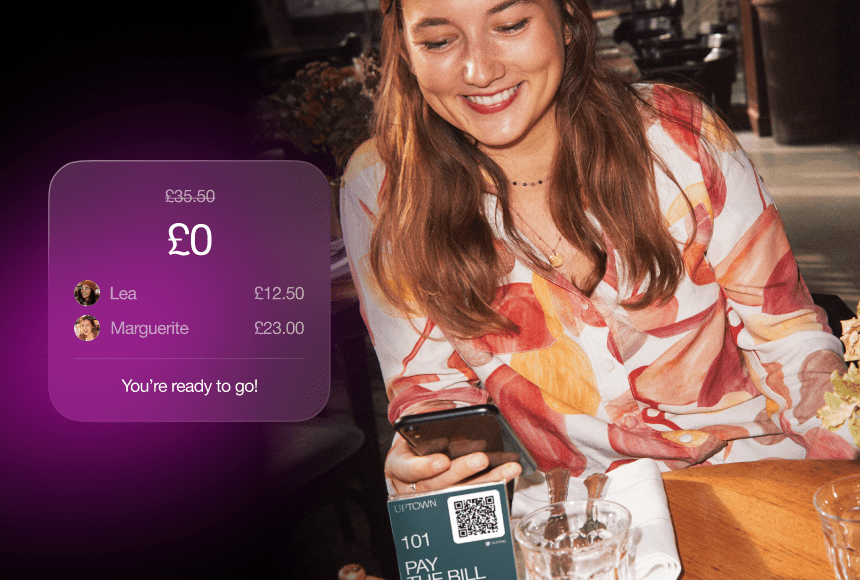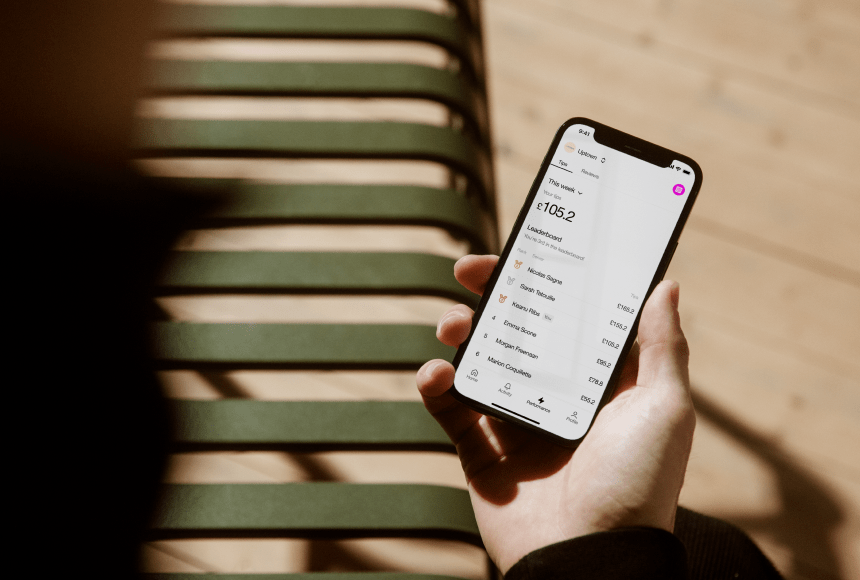
Breaking Down the Myths and Misunderstandings About QR Code Technology
Why QR Codes Matter in Modern Restaurants
Walk down any bustling UK high street and you’ll find QR codes stuck on shop windows, concert flyers, and even public transport ads. These tiny, square codes have become common for contact-free payments, online ordering, and product information. Yet, many restaurants remain cautious about introducing QR codes. Perhaps you’re worried about turning off less tech-savvy diners, or your staff isn’t fully convinced about the shift.
The truth is, QR codes can save time, reduce errors, and offer a fresh, modern way to handle menu browsing, payments, and more. They can even integrate seamlessly with loyalty programmes, making it easier to reward returning customers. But if your restaurant has been slow to adopt QR code technology, you’re not alone. In this article, we’ll explore some of the most common barriers stopping restaurateurs from embracing QR codes — and show you how to overcome these concerns for a smoother, more efficient dining experience.
Barrier #1: Fear That Technology Will Alienate Older or Less Tech-Savvy Customers
Many restaurateurs worry that introducing QR code menus or payments will baffle diners who are used to traditional methods. The last thing you want is to frustrate guests who prefer a standard printed menu or who find digital processes too complicated.
However, data suggests that even older demographics are warming up to mobile technology. According to Ofcom’s Online Nation report (source), smartphone usage has climbed steadily across all age groups in the UK. That means scanning a QR code is no longer the foreign concept it once was.
- Practical Tip: Offer a hybrid approach. Provide both a printed menu and a QR code option. This lets tech-savvy diners scan for quick access, while others can stick to the traditional method.
- Staff Support: Ensure your team is trained to help anyone who’s unsure. A quick demonstration often removes any confusion or awkwardness.
You might even find that older guests appreciate the convenience once they realise how simple it is. The key is to make the process as welcoming and straightforward as possible.
Barrier #2: Worries About Losing the “Personal Touch”
Some restaurant owners fear that introducing QR code menus and payments could reduce meaningful interactions between staff and diners. After all, part of the charm of dining out is chatting with a knowledgeable server, discussing wine pairings, and hearing about the day’s specials in a personal way.
But a well-implemented QR code system doesn’t have to replace these elements — it can actually enhance them. When diners can handle basic tasks (like viewing the menu or settling the bill) on their own, your staff gains more time to focus on personal touches. They can greet new arrivals with a warm smile, offer menu recommendations, or chat about seasonal ingredients.
- Practical Tip: Encourage staff to see QR technology as a tool, not a barrier. When a table is ready to pay via QR code, a server can follow up with a friendly farewell and an invitation to leave a quick review.
- Enhance Service: By reducing the time spent running back and forth with card machines or reprinting menus, your servers can offer deeper hospitality where it truly matters.
In short, QR codes take care of routine steps, freeing your team to create a memorable dining atmosphere. Rather than losing the personal touch, you get to elevate it.
Barrier #3: Concerns About Internet Connectivity and Tech Failures
Picture this: You’ve just launched a new QR code payment feature, but then your Wi-Fi falters at peak lunchtime, leaving diners unable to scan or pay. That’s the kind of horror story some restaurant owners dread. While it’s true that smooth internet access is essential for QR code solutions, connectivity issues are often manageable with the right infrastructure.
- Practical Tip: Invest in a reliable broadband connection and have a backup option, like a 4G router, in case your main network goes down.
- QR Code Redundancies: Even if your in-house Wi-Fi stumbles, many diners have mobile data. If you use a widely compatible QR system, they can still scan and pay. Just let them know they can switch to their phone’s data if needed.
- Plan B: Keep a few printed menus or conventional card readers on hand for worst-case scenarios. That way, you’re never fully reliant on technology alone.
By taking these precautions, you minimise disruptions and reassure diners that their experience won’t be derailed by a spotty signal.
Barrier #4: Privacy and Security Concerns
Today’s diners are increasingly aware of data privacy. You might worry that your customers will feel uneasy scanning a code that directs them to a digital menu or payment portal. What information is being collected? Is their data safe?
Transparency is your best friend here. If you’re using a QR code payment solution like Sunday, for instance, let your customers know it’s secure, reputable, and widely tested. Emphasise that the system is designed to protect both them and your business from fraudulent activity.
- Practical Tip: Display a small sign or a note on the table explaining that your QR codes lead to a secure, SSL-encrypted portal. Reassure guests they won’t need to download unfamiliar apps or share sensitive personal details.
- Staff Training: Make sure your team can confidently answer questions about data security. A quick explanation of how the payment process works can set worried minds at ease.
Many diners already use contactless cards and mobile wallets. QR code payments are a natural extension of that convenience, often with extra layers of security.
Barrier #5: Lack of Understanding About the Benefits
Adopting QR codes can be intimidating if you don’t fully grasp what’s in it for you. Beyond contactless payment and digital menus, QR codes can help you:
- Upsell More Effectively: QR menus can feature mouth-watering images, plus direct links to special offers or pairing suggestions.
- Change Menus on the Fly: With a digital menu, you can remove sold-out items or add a daily special without reprinting costs.
- Reduce Operational Costs: Save on paper menus and speed up turnover by making the payment process faster. This improved efficiency can lead to higher table throughput.
- Integrate a Loyalty Scheme: Tools like Sunday can seamlessly tie loyalty points to each transaction, encouraging repeat visits.
Once you see how QR codes can streamline your service and potentially boost sales, the shift feels far more worthwhile.
Barrier #6: Fear That Staff or Diners Will Resist Change
Change always invites a bit of pushback. Your staff might be anxious about learning a new system, especially if they’re not used to using digital devices at work. Diners, on the other hand, might simply wonder why they can’t do things the old-fashioned way.
This is where clear communication and positive framing come into play. Instead of saying, “We’re switching everything to QR codes!” reframe it as, “We’re offering a new option to make your dining experience quicker and easier, with less waiting and fuss.”
- Practical Tip: Roll out QR codes gradually. Start by offering them as an alternative to your usual method, then expand once your team and diners become comfortable.
- Train and Encourage: Provide short training sessions and cheat sheets so your staff can confidently walk diners through the process. Small incentives for staff who master the system quickly can also help build enthusiasm.
Over time, as people see the benefits — from quicker table turns to simpler bill-splitting — resistance usually fades.
Barrier #7: Belief That QR Codes Ruin the Aesthetic
Some restaurants take pride in carefully curated décor, from ambient lighting to thoughtfully selected tableware. You might worry that slapping a QR code sticker on the table will look out of place or cheapen the vibe.
This concern is valid. Your visual identity is an important part of your brand. But QR codes don’t have to be eyesores. They can be printed on elegant tabletop signs, integrated into your menu design, or displayed on small, tasteful stands. You can even incorporate your brand colours or add a discreet design around the code, as long as it remains scannable.
- Practical Tip: Work with a designer or use online tools to create custom QR codes that reflect your brand’s palette or style.
- Location Matters: Consider placing your codes on the corner of the table or on a menu stand, rather than the centre, so they’re visible but not intrusive.
The right visual presentation can ensure your dining room keeps its charm while embracing modern convenience.
Barrier #8: Uncertainty About ROI
Adopting any new technology might require initial investment, whether that’s hardware for signage or staff training time. You may wonder if you’ll see enough return on this to justify the expense. Will customers really tip more? Will table turnover improve enough to cover the costs?
Here’s some perspective: restaurants using QR codes for payments often report faster checkout times, which frees up tables more quickly. A McKinsey report (source) on digital adoption in hospitality noted that time-saving technology can directly impact revenue by boosting turnover. You also reduce printing costs for menus. And if your QR code solution integrates with loyalty, you can foster repeat visits, which adds to the bottom line over time.
- Practical Tip: Track key metrics: table turnover rate, average waiting time for the bill, and daily or weekly revenue changes after implementation.
- Leverage Data: With a digital payment system like Sunday, you also gain insights into purchase history, top-selling dishes, and peak dining hours. This data can guide menu tweaks or promotional strategies.
Over a few months, you’ll likely see tangible improvements that more than justify the initial setup costs.
How Sunday Helps Overcome These Barriers
If you’re considering QR code payments specifically, Sunday offers a streamlined, user-friendly solution. Here’s how it addresses the common challenges:
- Easy Adoption for Diners of All Ages: No app download required. Just a quick phone camera scan, a few taps, and the bill is settled.
- Personalisation and Human Touch: Servers remain pivotal for menu guidance and conversation, as Sunday only handles the technical payment side.
- Data Insights: You can see how quickly bills are settled, how often customers tip, and which times of day see the most sales.
- Security and Trust: Sunday uses encrypted transactions, reassuring guests who might be wary of sharing payment details online.
These features help you ease diners into the convenience of digital payments while preserving everything they love about your restaurant’s ambience and service.
Strategies for a Smooth Transition
Once you’ve made the decision to introduce QR codes, a little planning goes a long way. Follow these simple tips to ensure the process is as painless as possible:
- Start Small: Introduce QR code menus or payments on a few tables or during quieter shifts. Gather feedback from staff and diners, then refine your approach.
- Communicate Clearly: Use simple signage or menu notes explaining how QR codes work, and why you’ve added them. Focus on the benefits: reduced wait times, secure payment, and flexible ordering.
- Offer Staff Incentives: Reward team members who enthusiastically embrace the technology and help customers do the same. This fosters a positive attitude that diners will feel.
- Ask for Feedback: Encourage diners to share their experiences. If they had trouble with the code or found it easier than expected, that’s valuable intel. Keep fine-tuning the process.
- Monitor Key Metrics: Track how your new system affects table turnover, staff tips, and overall revenue. These figures can help you fine-tune your approach or highlight the value of your investment.
Imagining the QR-Enabled Future
Far from being a passing fad, QR codes are set to become an integral part of the dining experience, especially as mobile technology grows in importance. The next generation of diners expects speed, convenience, and personalisation. If done right, your QR code system can deliver all three, while still letting your kitchen shine and your servers form genuine connections with guests.
Think of the QR code as an extra ingredient that subtly enhances your restaurant’s flavour. It doesn’t need to dominate the plate. Instead, it’s there to make sure orders and payments flow, leaving the spotlight on your delicious cuisine and warm hospitality. When you show diners that technology can amplify — rather than replace — good old-fashioned service, you’ll break down the barriers and open up new possibilities.
Closing Thoughts: Embrace Change on Your Own Terms
Every restaurant is unique. The style, clientele, and vision you bring to the table define your space. Integrating QR codes shouldn’t and doesn’t have to rip apart that carefully built identity. It can be a quiet shift, done at your pace, with the support of your team and the enthusiasm of your regulars.
Whether you’re worried about alienating older guests or concerned about aesthetics, each barrier has a practical solution. With the right plan, a supportive team, and a willingness to adapt, you can introduce QR code technology as a tool that complements your restaurant’s essence. Over time, you may find that the convenience, cost savings, and improved guest experience make it one of the most rewarding decisions you’ve made — one that helps your restaurant thrive in a fast-evolving world.
Find out more today
Drop us your details below and we’ll reach out within the next 24
“Bill please” is a thing of the past.
With our integrated QR codes your customers pay in seconds, straight from their table.


